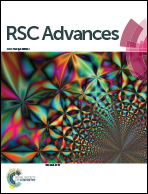Spectrally selective Cu1.5Mn1.5O4 spinel ceramic pigments for solar thermal applications
Abstract
In this work, Cu1.5Mn1.5O4 spinel ceramic pigments have been successfully prepared by a facile and cost-effective sol–gel self-combustion method and annealed at a temperature ranging from 500 °C to 900 °C for 1 h. The reaction process was discussed in detail through thermal analysis, X-ray diffraction (XRD), and Fourier transformation infrared spectroscopy (FTIR) techniques. The optical properties of the ceramic pigments annealed at various temperatures were also determined from the corresponding diffuse reflectance spectra in the 2.5–20 μm range, which elucidated that optimum spectrally selective paint coatings could be fabricated according to the pre-selection ceramic pigments. Ceramic pigments were utilized to fabricate thickness sensitive spectrally selective (TSSS) paint coatings by means of the convenient and practical spray-coating technique, and TSSS paint coatings based on pigments annealed at 700 °C showed absorptance of αs = 0.914–0.923 and emittance of εT = 0.244–0.357. Besides, thermal stability tests were carried out by a prolonged and extended accelerated thermal investigation at 227 °C. The TSSS paint coatings exhibited no observable visual changes and the performance criterion (PC) values reached the requirement needed.


 Please wait while we load your content...
Please wait while we load your content...